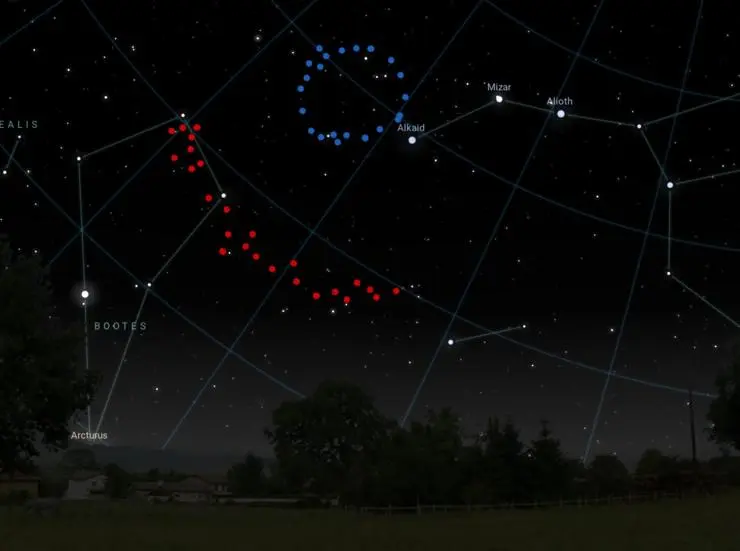A huge ring-shaped structure has been discovered in space that challenges our understanding of the universe.
Researchers at the UK’s University of Central Lancashire (UCLan) found the structure, which is 1.3 billion light-years across and about 15 times bigger than the moon, in the night sky as seen from Earth. But it can’t be seen with the naked eye because of the huge distance from Earth – about 9.2 billion light years.
The ring, nicknamed – creatively – Big Ring on the Sky by the researchers comprises galaxies and galaxy clusters.
The Big Ring was discovered by UCLan PhD student Alexia Lopez who, two years ago, also discovered the Giant Arc on the Sky. The Big Ring and the Giant Arc, which is 3.3 billion light years across, are in the same cosmological neighborhood – they are seen at the same distance, at the same cosmic time, and are only 12 degrees apart on the sky.

Credit: University of Central Lancashire
“Neither of these two ultra-large structures is easy to explain in our current understanding of the universe,” said Alexia. “And their ultra-large sizes, distinctive shapes, and cosmological proximity must surely be telling us something important – but what exactly?”
Such large structures – and there are others found by other cosmologists – challenge our idea of what an ‘average’ region of space looks like. They exceed the size limit of what is considered theoretically viable, and they pose potential challenges to the Cosmological Principle.
“The Cosmological Principle assumes that the part of the universe we can see is viewed as a ‘fair sample’ of what we expect the rest of the universe to be like,” added Alexia. “We expect matter to be evenly distributed everywhere in space when we view the universe on a large scale, so there should be no noticeable irregularities above a certain size.
“Cosmologists calculate the current theoretical size limit of structures to be 1.2 billion light-years, yet both of these structures are much larger – the Giant Arc is almost three times bigger and the Big Ring’s circumference is comparable to the Giant Arc’s length.
“From current cosmological theories we didn’t think structures on this scale were possible. We could expect maybe one exceedingly large structure in all our observable universe. Yet, the Big Ring and the Giant Arc are two huge structures and are even cosmological neighbours, which is extraordinarily fascinating.”
Alexia presented her findings on the Big Ring at the 243rd meeting of the American Astronomical Society (AAS) on January 10. The AAS invites researchers with potentially ground-breaking findings to share their work with the global astronomy community.
